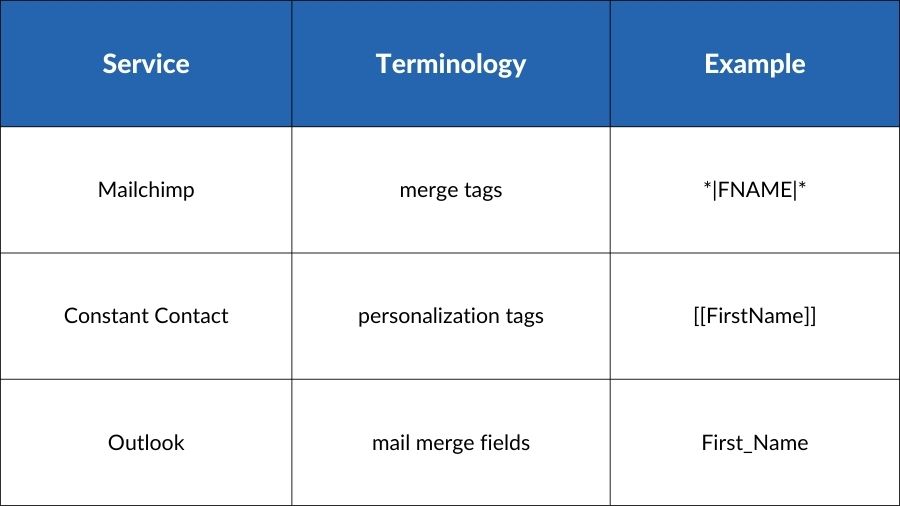How To's
How to Use Email Personalization To Boost Student Engagement

Email marketing can be an efficient and cost-effective way to reach your students. The return on investment for email marketing is a staggering $44 for every $1 spent, according to a report from Campaign Monitor. That’s the good news. The bad news is that it can be difficult to make these emails feel personal and keep students engaged.
You probably don’t have time to write a unique email for each student on your mailing list, but you do want to show each student you care about them and their learning path. What is an education program manager to do? A smart email personalization strategy can help you stay efficient but still engage students.
Striking the balance between efficiency and personalized communication is actually pretty easy if you follow some simple best practices. You don’t have to customize everything, you just need enough personalization to show students they matter to you.
We’ve gathered these 5 easy email personalization tips to help you save time while still getting maximum engagement from students.
What Is Email Personalization?
When you pick up the mail from your mailbox, which piece of mail are you most likely to open—one addressed to “current occupant” or one addressed to you by name? The same is true of emails. Students are more likely to open and engage with emails that feel personalized.
Personalized doesn’t mean you have to write a unique email for each student. It also doesn’t mean you have to include chatty details about the student’s pets or personal interests. What you should do is:
- Call the student by name
- Share information that’s relevant to them
- Take their level of engagement into account
We’ll show you how to do all of this in the next few sections. It all starts with understanding of the basics. For a deeper dive on how to use email marketing to grow your program, check out our Guide to Email Marketing.
1. Understand The Basics Of Email Personalization
The most essential part of an email to personalize is the salutation. You should always include the person’s name in the salutation. So you can start emails:
- Dear John,
- Hello John,
- Hi John,
- Hey John,
Usually, just including a first name is preferred. Writing out someone’s full name in an email salutation can seem strangely formal.
For extra warmth, you can also use their name in the body of the email. Like this:
- We know you’ll love the classes, John.
- We hope to see you soon, John.
- Thanks for being a member of our community, John.
Just don’t overuse this technique. Adding their name to every other line feels like you’re trying too hard. So only use their name where it makes sense for emphasis. In general, including it at the beginning or end of your email is the most natural. If possible, you might also want to include their name in your subject line just don’t overdo it.
For example, which of these emails would you be more likely to open?
- Best Courses for the Summer
- Best Courses for You, John
If your name was John, you’d probably click on option two.
How to personalize emails
Pretty much any email marketing software you choose will allow you to add the student’s first name, last name, address, email, or phone number just by including a specially formatted bit of text in your email. Each service has a different name for this function and requires different formatting.

Learn more about Mailchimp’s merge tags, Constant Contact’s personalization tags, and Outlook’s mail merge fields. All of these services have multiple tags or fields you can include in your emails, and most let you designate your own tags for special use cases. Which brings us to our next tip…
2. Collect The Right Information For Your Contact List
Personalization starts before you send the first email. You have to know some basic facts about the recipient before you can create a personalized email. At absolute minimum, you should have the following information about each person on your email list:
- First Name
- Last Name
- Email address
If it would help with other parts of your marketing plan, you might also want to note their:
- Phone number
- Mailing address
- Age
- Gender
Information like this can help you target your marketing later on. For example, you might have classes that are of particular interest to people of a certain age. Collecting this information allows you to create marketing messages specifically for them.
To really get the most out of email personalization, consider adding tags. Tags are labels that can help you keep track of important information about every contact in your email list. You might tag contacts based on:
- Whether they’ve registered for classes
- How their email ended up on your list
- What classes they registered for
- Whether they’re registering themself or a child
- What subjects they’re interested in
When you get ready to send out an email communication, you can sort your audience by tags and mail only to people who are likely to be interested.
You don’t have to add these tags by hand. Most email software will let you set up automations to tag people based on their actions or stated preferences. This works best if you integrate your email provider with your registration platform, which is why that’s our next tip!
3. Integrate Your Email Provider and Registration Platform
When a student registers for one of your classes, you collect information about them. If your registration platform is integrated with your email provider, that information can automatically flow into your contact database.
You may be able to set up tagging automations that help you capture even more detail. For example, every student who signs up for your Peaceful Parenting class might get a “Parent” tag. Later, when you have a new course on Planning Healthy Meals for Kids you might email those “parent” tagged contacts.
Tools like Zapier can help you integrate your software solutions and set up tagging automations.
4. Provide Custom Class Recommendations
The classes a student has already taken can give you some idea of what other classes they might be interested in. Students who take Intro to Watercolor Painting might also like a class on composition, for example. You can increase the likelihood that students will sign up, by sending emails personalized to their interests.
You can do this manually by:
creating lists of courses clustered around topics
- drafting emails with information about and registration links for each course
- selecting the right audience based on tags
- sending to that audience.
It’s time-consuming, but can be more effective than just sending out a link to your entire course catalog.
But there’s a better way
CourseStorm customers have access to automatic email marketing. When you enable this feature, CourseStorm automatically sends emails to select students advertising classes that might be of interest to them. You save time, and your students get personalized recommendations.
We know it works because we’ve tested it. More than 10% of students who receive these emails click on the links. One arts center received more than $2,300 in registrations from automatic email marketing in just two weeks.
Our automatic email marketing feature only sends emails when there’s a good match for the student based on their registration history. If you’re sending emails manually, you should use the same criteria. The goal is always to make the student feel valued by showing that you understand their needs and interests.
That’s why our final email personalization tip reminds you to focus on what the student needs.
5. Always Focus on the Student
There may be messages you need to send to all students. For example, the launch of a new course catalog or news about your program. The rest of the time, you want to take a customized approach.
Before you send any email, consider these questions:
- Who is this message for?
- How does this message help someone solve a problem? What problem?
- How does this message help fill a need? What need?
- What details does the reader need to understand my message?
- What facts, reasons, stories, or testimonials are likely to influence this person?
- What do I want the reader to do after reading my email?
Answering these questions can help you write better marketing emails. You’ll be able to personalize details based on the real needs and interests of your students. Plus, you’ll be prepared to include the information they need to make a decision.
Try Personalized Email Marketing For Your Program
There’s a reason why personalization is the number one tactic marketers use to increase email engagement rates. It works. Personalization is just one way you can use email marketing to increase class enrollments. Apply these tips in your program and prepare for higher open rates, more clicks, and more registrations!
CourseStorm helps programs maximize enrollment with impossibly simple registration software that offers integrated email marketing and other essential tools. Contact us today to learn more.

Nic Lyons
Nic is skilled in scaling start-up edtech and education organizations to growth-stage success through innovative marketing. A former journalist and copywriter, Nic holds a postgraduate certificate in digital and print publishing from Columbia University School of Journalism's publishing course.
